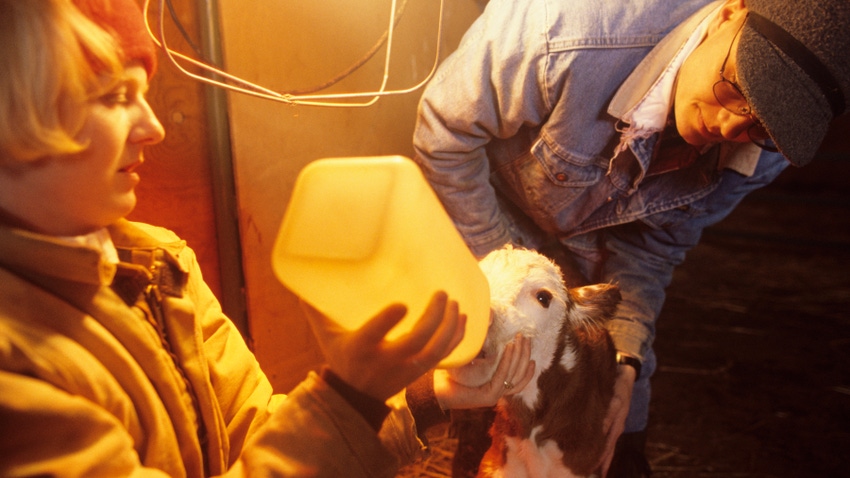February 21, 2023

by Tony Hawkins
There are few moments more special on the farm than welcoming a newborn to your herd. Whether you’re foaling, calving, kidding or lambing, some may be surprised how similar the process is.
Let’s review readiness prep and signs of labor. While there could be some species-specific differences, much of this information is similar for all species.
Readiness prep
When it comes to what you’ll need to have on hand, very importantly, you need to first have a relationship with a veterinarian. I would strongly encourage you to develop that relationship and speak with your veterinarian before your calving, foaling, kidding or lambing season.
Rather than, say, just calling that veterinarian at 2 a.m. when the need is great. As a veterinarian, it's nice to know people before you get that call. Be sure to have their contact information handy, should you need his or her help.
Have some key items at the ready, such as gloves and lubrication, in case you need to help with minor pulling, and iodine for disinfecting the umbilical stump. If you and your veterinarian decide that you need to give any vaccinations or medications at birth, have those medications on hand, as well as some syringes and needles.
If you apply ear tags and bands at birth, have those tags and bands available, as well as a tetanus toxoid to administer at that time.
It’s also important to have colostrum or colostrum replacers on hand, because you never know whether colostrum will be needed. Colostrum is important for all species, and the majority of the antibody absorption takes place in the first six to eight hours of life.
Ideally, newborn animals should be up and nursing within the first four hours to receive these important antibodies from colostrum. If they're not, then we need to start thinking about getting supplemental colostrum, or milking manually, if possible, to get them the colostrum they need.
Now, they can absorb the antibodies all the way up until 18 to 24 hours, but they just are not as efficient and will not absorb as many antibodies as they would have early in life.
It is important to choose a species-specific colostrum replacer or serum replacement. This is because colostrum products come from hyper-immunized animals, and they don't immunize goats, cattle and horses against the same disease risks.
The rest of the items you may need to have on hand all depend on your comfort level.
Some of the equipment you need to help an animal through a dystocia process include chains and handles, and if you’re calving, a calf jack. A calf jack is great if you’re comfortable using them, but remember that when used incorrectly, they can harm both the mama and the baby.
When using chains, to ensure safety of the newborn, put the first loop above the fetlock and then put a second loop (a half hitch) between the fetlock and hoof. Remember, if you're just not comfortable using these items and something's wrong, give your veterinarian a call to have them help in this delivery process.
Signs of labor
In general, there are similar signs of labor for most every species of livestock. About three to four days before, their pelvic muscles begin to relax on the backside, making their tail head become more prominent. You may notice a dilation of the cervix with an accompanying thick, clear mucus. Their bag also gets distended.
About one day before, cattle, goats and sheep tend to go off feed and go off by themselves. About two to five hours before delivery, the water bag will appear through the vulva.
If you have horses, they have a few more signs. Udder distension occurs about two to four weeks before foaling, and their teats become engorged four to six days before. About one day before foaling, waxing of the teats occurs.
During the earliest stage of foaling, contractions begin, and the mare may start acting a bit colicky. It’s common for mares to be restless in their stall, sweating, pawing, swishing their tail and getting up and down.
There is nothing better than a safe delivery and healthy calf, foal, goat or lamb.
Hawkins is a DVM and Valley Vet Supply technical service veterinarian. Visit ValleyVet.com.
You May Also Like




